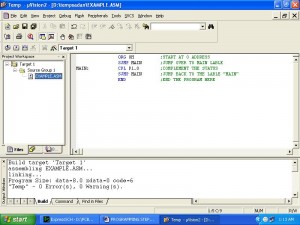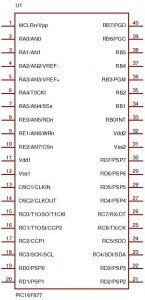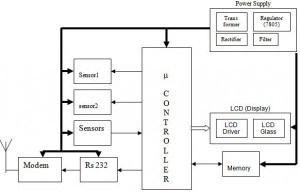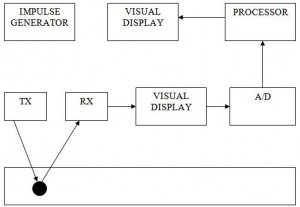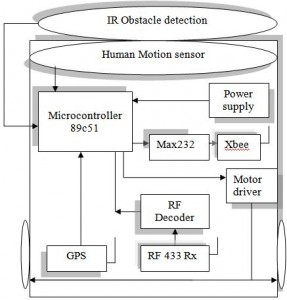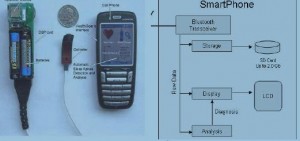Nowadays there are various electronic equipment available for remote operation of grid control. However, the main disadvantage of these systems is that they can be operated only from short ranges and also less reliable. Thus, to overcome the above drawbacks, we are using one of the wireless communication technique i.e., GSM (Global System for Mobile communications) is a digital cellular communications system which has rapidly gained acceptance and market share worldwide.
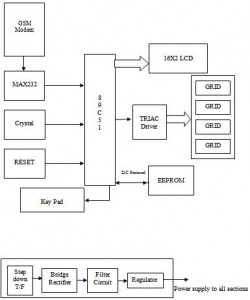 The development of GSM is the first step towards a true personal communication system that will allow us to communication anywhere, anytime and with anyone.
The development of GSM is the first step towards a true personal communication system that will allow us to communication anywhere, anytime and with anyone.
GSM Modem Using Sensors 2011 ECE Technical Project is vastly used because of its simplicity in both transmitter and receiver design, can operate at 900 or 1800MHZ band, faster , more reliable and globally network .
This project is designed for seven power grids. 8051 is the heart of the project. A GSM modem is interfaced to microcontroller. This modem receives the messages from control mobile and sends as input to MCU. The MCU verify for authentication of the number and, if the number is authorised, grid control will be taken place, EEPROM is interfaced to this controller to save the grid position at every instant. This grid position information will not be deleted even in power failure conditions. 3X4 keypad is interfaced to change the mobile number at any time. 16X2 LCD is interfaced to display user-required information. In this project TRAIC is used as load controller (as a switch), MOC3021 used as a Triac driver.
GSM network operators have roaming facilities, user can often continue to use there mobile phones when they travel to other countries etc….
This project uses regulated 5v, 750mA power supply. 7805 and 7812 three terminal voltage regulators are used for voltage regulation. Bridge type full wave rectifier is used to rectify the ac output of secondary of 230/12v step down transformer.
INTRODUCTION TO EMBEDDED SYSTEMS
An embedded system can be defined as a computing device that does a specific focused job. Appliances such as the air-conditioner, VCD player, DVD player, printer, fax machine, mobile phone etc. are examples of embedded systems. Each of these appliances will have a processor and special hardware to meet the specific requirement of the application along with the embedded software that is executed by the processor for meeting that specific requirement. The embedded software is also called “firm ware”. The desktop/laptop computer is a general purpose computer. You can use it for a variety of applications such as playing games, word processing, accounting, software development and so on. In contrast, the software in the embedded systems is always fixed listed below:
· Embedded systems do a very specific task, they cannot be programmed to do different things. . Embedded systems have very limited resources, particularly the memory. Generally, they do not have secondary storage devices such as the CDROM or the floppy disk. Embedded systems have to work against some deadlines. A specific job has to be completed within a specific time. In some embedded systems, called real-time systems, the deadlines are stringent. Missing a deadline may cause a catastrophe-loss of life or damage to property. Embedded systems are constrained for power. As many embedded systems operate through a battery, the power consumption has to be very low.
· Some embedded systems have to operate in extreme environmental conditions such as very high temperatures and humidity.
Application Areas
Nearly 99 per cent of the processors manufactured end up in embedded systems. The embedded system market is one of the highest growth areas as these systems are used in very market segment- consumer electronics, office automation, industrial automation, biomedical engineering, wireless communication,
data communication, telecommunications, transportation, military and so on.
In this project work, we have studied and implemented a complete working model using a Microcontroller. The programming and interfacing of microcontroller has been mastered during the implementation. This work includes the study of GSM Modem Using Sensors 2011 ECE Technical Project.
GSM network operators have roaming facilities, user can often continue to use there mobile phones when they travel to other countries etc..
Download GSM Modem Using Sensors 2011 ECE Technical Project.
 Once the vehicle is parked into the vacant space, it is intimated to the mobile and indicates a change in the LCD count. If a miscreant takes hold of the vehicle then the security guard is alerted by means of a buzzer. This project aims at delivering a safe and resourceful parking system with hacking detection.
Once the vehicle is parked into the vacant space, it is intimated to the mobile and indicates a change in the LCD count. If a miscreant takes hold of the vehicle then the security guard is alerted by means of a buzzer. This project aims at delivering a safe and resourceful parking system with hacking detection.
